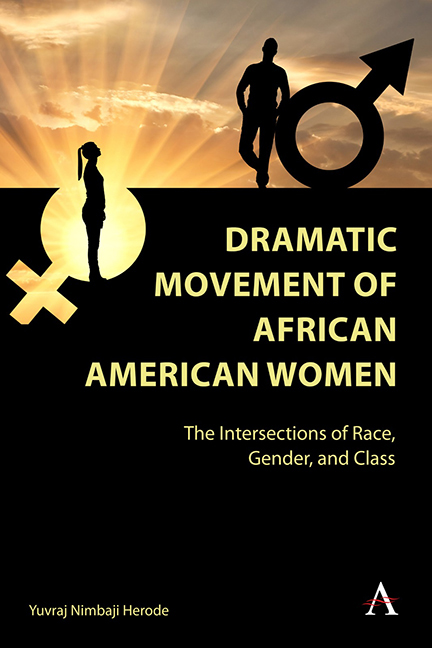Chapter Five - Conclusions
Published online by Cambridge University Press: 28 February 2024
Summary
The dramatic movement of African American women is a consciousness of victimization that one is oppressed, because one is African American, female, and poor. Through their plays, Alice Childress, Lorraine Hansberry, and Suzan-Lori Parks have revealed the social, economic, political, cultural, and educational oppression of African Americans in general and especially the African American women in the racist white society. They have defined and captured the African, African American, and especially African American women's experiences in their dramas. They have highlighted their existential troubles to reveal African and African American life, history, and culture. These dramatists have demolished the distortions which were in existence pertaining to their history, culture, civilization, and the life style in general and African American women in particular. They have launched a protest against racism, sexism, and classism.
The images of African American women in the plays written by African American men are generally different from the images of African American women in the plays by African American women. In her essay, “Images of Black Women in the Plays by Black Playwrights,” Jeanne Marie A. Miller states that:
In the plays written by black males, black women's happiness or completeness depends upon strong black men. […] Black women playwrights bring to their works their vision, however, different of what black women are or what they should be.
(qtd. in Brown-Guillory 206)Alice Childress, Lorraine Hansberry, and Suzan-Lori Parks wrote about the same subject that of the African American male playwrights, but they differed in terms of perceptions. The central characters in their plays are generally female. These women are often found in key roles. In many plays, the husband is dead, or deficient in the family unit. The action for some of the parts takes place in a domestic situation. However, the effects of racism resonate in the house. They offered a multiplicity of options through African American characters that came from the heart of African American community.
Alice Childress dwells on the triple jeopardy and subjugation of African American women due to racism, classism, and also by the white and African American patriarchal social order. She uses a dramatic technique known as iconographic approach of representation which highlights the problems of ethnic identity. The icon functions as objects related to other objects on the stage. Photographs, masks, signs, and paintings also function as related elements, representing the blackness on the stage.
- Type
- Chapter
- Information
- Dramatic Movement of African American WomenThe Intersections of Race, Gender and Class, pp. 169 - 178Publisher: Anthem PressPrint publication year: 2023

